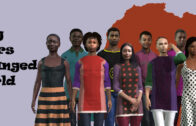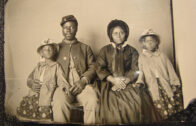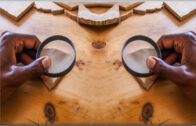INVENTION SCHOOL STORY – Nonkululeko’s Quantum Leap
MEMBERS & VISITORS:
INVENTION SCHOOL STORY – Nonkululeko’s Quantum Leap
Chapter 1: The Catalyst.
Nonkululeko, a spirited teenager from Johannesburg, South Africa, was a shining star in the Invention School. Her curiosity and drive to learn were infectious, and she had a knack for seeing the world in ways others didn’t. She was always looking for ways to apply her knowledge to real-world problems, and her latest project was no different.
One day, while scrolling through her social media feed, she came across a news article that stopped her in her tracks. It was about Cape Town’s impending ‘Day Zero’ – a day when the city’s water supply would run dry due to a prolonged drought and increased consumption. The thought of a city running out of water was unimaginable to her. She could picture the long queues at the water distribution points, the despair on people’s faces, and the chaos that would ensue.
Nonkululeko felt a knot in her stomach. She knew Cape Town was not alone in facing this crisis. Many regions in Africa were grappling with water scarcity due to climate change and population growth. She thought about her own city, Johannesburg, and wondered if it could face a similar fate one day.
She felt a sense of urgency. She knew she had to do something. She had the knowledge, the skills, and the platform through the Invention School. It was time to put them to use. She decided then and there that she would dedicate her next project to addressing this water crisis. She didn’t know how yet, but she was determined to find a way.
Chapter 2: The Brainstorm.
With a newfound sense of purpose, Nonkululeko started brainstorming ideas. She knew that the solution had to be sustainable, affordable, and scalable. She spent hours researching, reading about the water crisis, understanding its causes, and studying existing solutions.
One day, during her research, she stumbled upon an article about VulcanForms, a start-up that had revolutionized 3D printing technology. Their machines, towering at 20 feet high and weighing 60,000 pounds, were capable of creating intricate parts from titanium and other materials, layer by layer, with incredible precision. The technology was being used in fields like aerospace, semiconductors, defense, and medical implants.
Nonkululeko was fascinated. She saw potential in this technology that went beyond its current applications. “I could use this technology to address the water crisis,” she thought aloud during a video call with her mentor, Joseph Mwangi.
Joseph, a seasoned mechanical engineer from Kenya, was intrigued. He had seen Nonkululeko’s passion and creativity in action before, and he knew she had the potential to turn this idea into a reality. “That’s a brilliant idea, Nonkululeko,” he responded, his eyes lighting up with excitement. “3D printing could allow us to create complex and efficient designs that might not be possible with traditional manufacturing methods. Let’s explore it further.”
And so, they did. Nonkululeko and Joseph spent countless hours discussing the possibilities, sketching designs, and planning their approach. They knew they were onto something big. They just needed to figure out how to bring their idea to life.
Chapter 3: The Invention.
Nonkululeko’s first invention was a 3D-printed water filtration system. She designed it to be compact, efficient, and easy to use. The system was composed of multiple layers, each serving a specific purpose in the filtration process. The top layer filtered out large debris, the middle layer contained activated carbon to remove chemicals and improve taste, and the bottom layer was a ceramic filter that removed bacteria and other microorganisms.
The beauty of using 3D printing technology was that Nonkululeko could customize the design based on the specific needs of a region. For areas with high levels of chemical pollutants, she could increase the thickness of the activated carbon layer. For regions with high bacterial contamination, she could enhance the ceramic filter layer.
The invention was a hit. It was affordable, easy to use, and most importantly, it provided clean, safe drinking water. Nonkululeko’s filtration system was soon being used in homes across Johannesburg and other parts of South Africa.
Her second invention was a 3D-printed rainwater harvesting system. The system was designed to be attached to rooftops, where it would collect rainwater, filter it, and store it in a tank. The tank was also 3D-printed and could be customized to fit the space available in a household. This invention was particularly useful in regions that experienced seasonal rainfall. It allowed households to collect and store rainwater during the rainy season, which they could use during the dry months.
Nonkululeko’s third invention was a 3D-printed irrigation system. This system was designed to provide a cost-effective and efficient way for small-scale farmers to irrigate their crops. The system used a network of 3D-printed pipes and valves that could be customized based on the layout of a farm. The valves could be programmed to release water at specific times, reducing water wastage and ensuring that the crops received the right amount of water at the right time.
These inventions were not just products; they were solutions to real-world problems. They were a testament to Nonkululeko’s creativity, her understanding of her community’s needs, and her ability to leverage advanced technology to create impactful solutions. Her inventions were a beacon of hope, a testament to the power of innovation, and a symbol of the change that the young minds at the Invention School were capable of bringing about.
Chapter 4: The Impact.
Nonkululeko’s inventions were more than just solutions to a problem; they were catalysts for change. Her 3D-printed water filtration system was quickly adopted by households across Johannesburg and other parts of South Africa. The system’s affordability and effectiveness made it a popular choice for families struggling with access to clean drinking water. The impact was immediate and profound. Cases of waterborne diseases dropped, and families no longer had to worry about the safety of their drinking water.
Her rainwater harvesting system was a game-changer for regions that experienced seasonal rainfall. Households could now collect and store rainwater during the rainy season and use it during the dry months. This not only provided a reliable source of water but also reduced the strain on the municipal water supply.
The 3D-printed irrigation system revolutionized small-scale farming. Farmers could now irrigate their crops efficiently, reducing water wastage and improving crop yield. The system was affordable and easy to install, making it accessible to even the most remote farms.
But the impact of Nonkululeko’s inventions extended beyond their immediate applications. They sparked a wave of innovation across the continent. Young inventors were inspired by her success and started exploring how they could use 3D printing technology to solve problems in their own communities.
Nonkululeko’s inventions also caught the attention of the government and international entities. They saw the potential of 3D printing technology in addressing some of the continent’s most pressing challenges. This led to increased investment in innovation programs and the creation of initiatives to promote the adoption of 3D printing technology.
Nonkululeko’s journey was a testament to the power of innovation and the potential of young minds. Her inventions not only solved immediate problems but also paved the way for future innovations. They showed that with the right tools and resources, young inventors could create solutions that could change the world.
Chapter 5: The Future.
Nonkululeko’s success was just the beginning. Her inventions had sparked a wave of innovation across Africa, and she was determined to keep the momentum going. She started mentoring other young inventors, sharing her knowledge and experiences, and inspiring them to think creatively and innovatively.
She also continued to work on new inventions. She saw endless possibilities with 3D printing technology and was constantly thinking of new ways to use it to solve problems. She started working on a 3D-printed solar-powered water purifier, a project that combined her passion for clean water with sustainable energy.
Nonkululeko’s success also had a profound impact on the Invention School. The school saw a surge in applications, and more resources were invested in expanding the program. The school started offering courses on 3D printing technology, and a new lab was set up for students to experiment and create their own inventions.
Nonkululeko’s story spread far and wide. She was invited to speak at international conferences and events, sharing her journey and inspiring others. She became a role model for young inventors across the globe, showing them that with creativity, determination, and the right resources, they too could make a difference.
Nonkululeko’s journey was a testament to the power of innovation and the potential of young minds. Her inventions not only solved immediate problems but also paved the way for future innovations. They showed that with the right tools and resources, young inventors could create solutions that could change the world.
As Nonkululeko looked to the future, she saw endless possibilities. She knew that there were many more problems to solve, and she was ready to take them on. She was excited about the future of 3D printing technology and the impact it could have on the world. She was determined to continue innovating, inspiring, and making a difference. And she knew that with the support of the Invention School and her fellow inventors, she could achieve anything she set her mind to.
Chapter 6: The Legacy.
Nonkululeko sat in the quiet of her workshop, her eyes scanning the room filled with prototypes, tools, and the 3D printer that had become an extension of her creativity. She was surrounded by the tangible evidence of her journey, each invention a testament to her determination, each failure a lesson learned.
She picked up a small, intricate model of her latest project, a solar-powered water purifier. She turned it over in her hands, her fingers tracing the carefully designed channels and compartments. It was still a work in progress, but she could already see its potential.
Nonkululeko’s thoughts were interrupted by a notification on her computer. It was a message from a young girl in a remote village in South Africa. She had heard about Nonkululeko’s inventions and was inspired to create her own solutions for her community. The girl was eager to learn and was seeking Nonkululeko’s guidance.
Nonkululeko smiled as she read the message. This was the legacy she was building. Not just the inventions that were changing lives, but the inspiration she was providing to young minds across Africa and the world.
She typed a response, her words filled with encouragement and advice. “Never let anyone tell you that you are too young or inexperienced to make a difference,” she wrote. “Your ideas are valuable. Your perspective is unique. And your potential is limitless.”
As she hit send, Nonkululeko felt a sense of pride. She was not just an inventor; she was a mentor, a role model, a beacon of hope for young inventors. She was proof that with creativity, determination, and the right resources, anyone could make a difference.
Nonkululeko’s journey had not been easy. There were times when she felt overwhelmed, when the challenges seemed insurmountable. But she had learned to embrace these moments, to see them not as setbacks but as opportunities for growth.
“I am not afraid to fail,” she said aloud to the empty room. “Failure is not the end. It’s just a stepping stone to success.”
Nonkululeko knew that her work was far from over. There were still many problems to solve, many inventions to create, and many young inventors to inspire. But she was ready for the challenge. She was excited about the future of 3D printing technology and the impact it could have on the world.
As she looked around her workshop, Nonkululeko felt a sense of anticipation. She was just getting started. And she knew that with the support of the Invention School and her fellow inventors, she could achieve anything she set her mind to.
Nonkululeko’s story was a testament to the power of innovation, the potential of young minds, and the transformative impact of 3D printing technology. Her journey was not just about the inventions she created, but the legacy she was building. A legacy of innovation, inspiration, and impact. A legacy that would continue to inspire and empower young inventors for generations to come.
We have published other informative posts on Invention School’s website which may interest you. To view our entire catalog of over 800 posts go to inventionschool.tech/category/blog/ or use our handy search tool to find topics of interest to you.
Mechanical/Solar Engineer, Prof. Oku Singer
(18)






